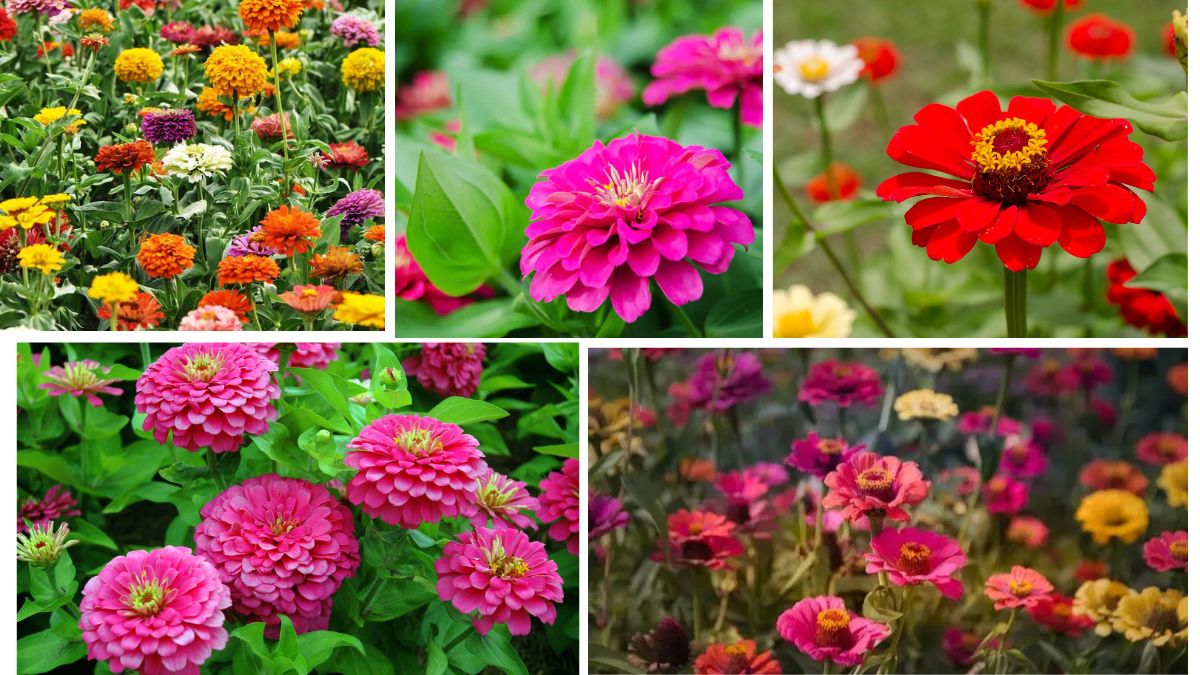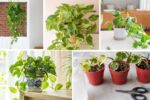Zinnias, with their cheerful blooms and rainbow hues, are among the easiest and most rewarding flowers to grow in a home garden. These vibrant annuals offer dazzling color from early summer until the first frost, attracting pollinators like butterflies and bees while demanding minimal care. If you’re looking to fill your garden with long-lasting blooms that thrive in full sun and warm weather, Zinnias are a top choice. In this article, we’ll explore the secrets behind growing lush, colorful Zinnias with practical tips and insights to keep your garden blooming all season long.
Why Choose Zinnias for Your Garden?
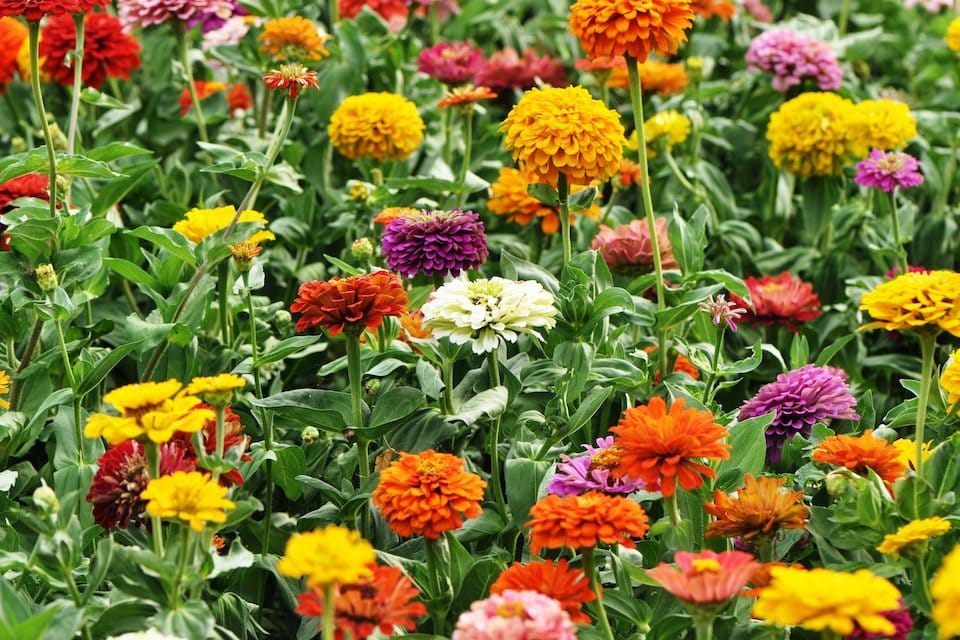
Zinnias are beloved by gardeners for several reasons:
- Vibrant Color Range: From bold reds and hot pinks to bright oranges, yellows, whites, and purples.
- Varied Flower Forms: Available in single, semi-double, and fully double blooms.
- Attract Pollinators: Zinnias are magnets for butterflies, hummingbirds, and bees.
- Cut Flower Delight: Their strong stems and long vase life make them perfect for bouquets.
- Easy to Grow: They are one of the most beginner-friendly flowers to cultivate.
Best Climate and Conditions for Growing Zinnias
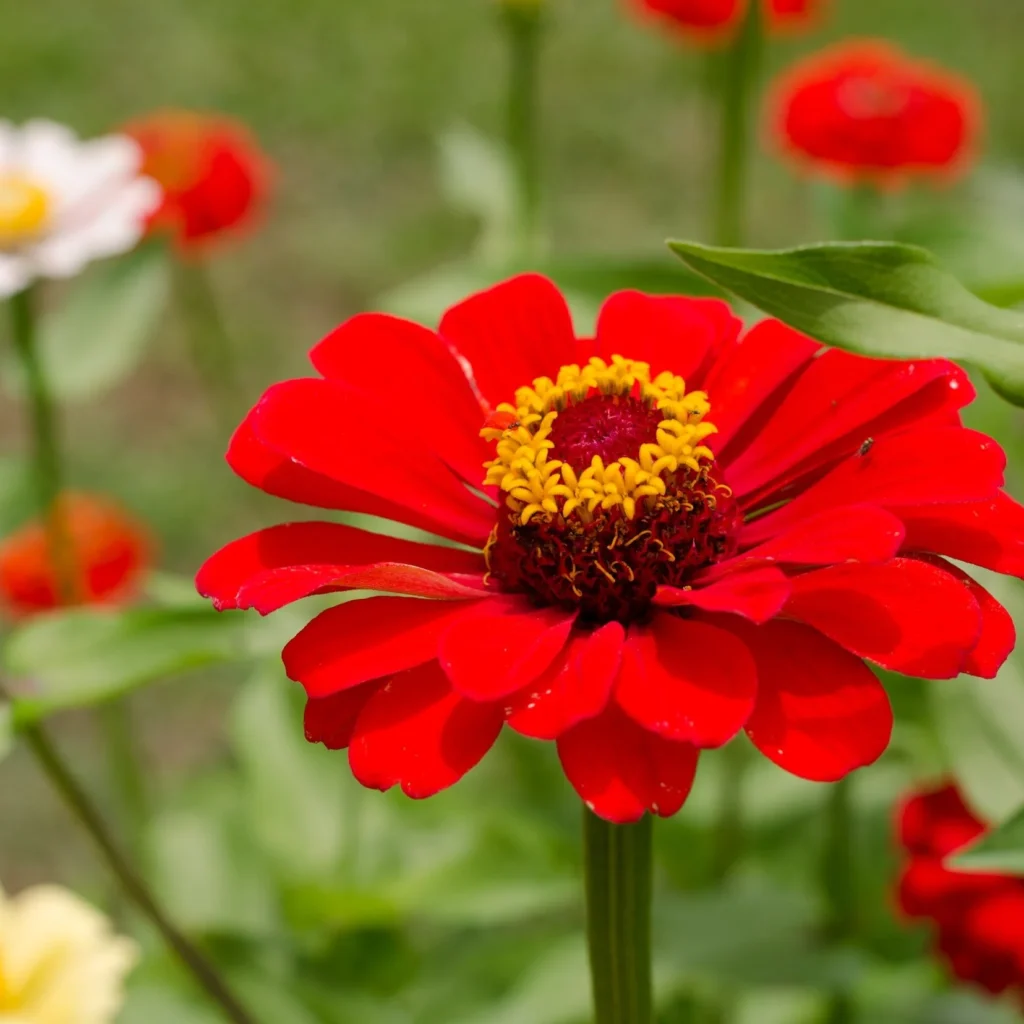
Zinnias thrive in warm weather and love full sunlight. They’re ideally suited for USDA zones 3–10. While they’re considered annuals, in tropical regions (zones 9–11), they may reseed themselves and return year after year.
Optimal Growing Conditions:
- Temperature: 70–90°F (21–32°C)
- Sunlight: At least 6–8 hours of direct sunlight per day
- Soil Type: Well-draining, loamy soil with moderate fertility
- Soil pH: Slightly acidic to neutral (6.0–7.0)
How to Grow Zinnias from Seed
Zinnias are best grown from seed directly in the garden. Here’s a step-by-step guide:
Step 1: Timing the Planting
- Direct Sow Outdoors: Once the last frost has passed and soil has warmed (above 60°F).
- Indoor Start: You can start seeds indoors 4–6 weeks before the last frost date, but Zinnias prefer not to be transplanted due to their delicate roots.
Step 2: Soil Preparation
- Loosen the soil to a depth of 8–12 inches.
- Work in compost or aged manure to improve fertility and drainage.
- Avoid nitrogen-rich fertilizers, which produce foliage at the expense of flowers.
Step 3: Sowing the Seeds
- Sow seeds ¼ inch deep and 6–12 inches apart depending on the variety.
- Lightly cover with soil and water gently.
Step 4: Thinning and Spacing
- Thin seedlings when they’re 2–3 inches tall, spacing them 12–24 inches apart for airflow and proper growth.
Watering and Feeding Zinnias
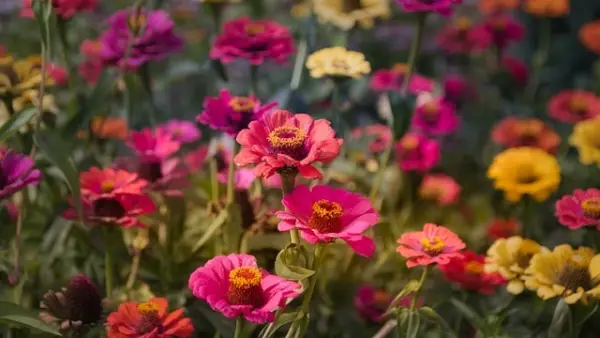
Zinnias are somewhat drought-tolerant once established but grow best with consistent moisture.
Watering Tips:
- Water deeply once or twice a week.
- Avoid overhead watering to prevent fungal issues; drip irrigation is ideal.
- Let the soil dry slightly between watering.
Fertilization:
- Zinnias generally don’t require much feeding.
- Apply a balanced fertilizer (10-10-10) monthly or use compost tea every few weeks.
- Avoid high-nitrogen feeds, which reduce bloom production.
Maintenance Tips for Healthier Blooms

To keep your Zinnias looking their best throughout the season, regular maintenance is key:
1. Deadheading
- Remove spent blooms regularly to encourage continuous flowering.
- Pinch or cut stems just above a leaf node.
2. Pruning
- Pinch back young plants when 6–8 inches tall to promote bushier growth.
- Remove any diseased or weak stems.
3. Weeding
- Keep the area around your Zinnias weed-free to reduce competition for nutrients and water.
Pest and Disease Control
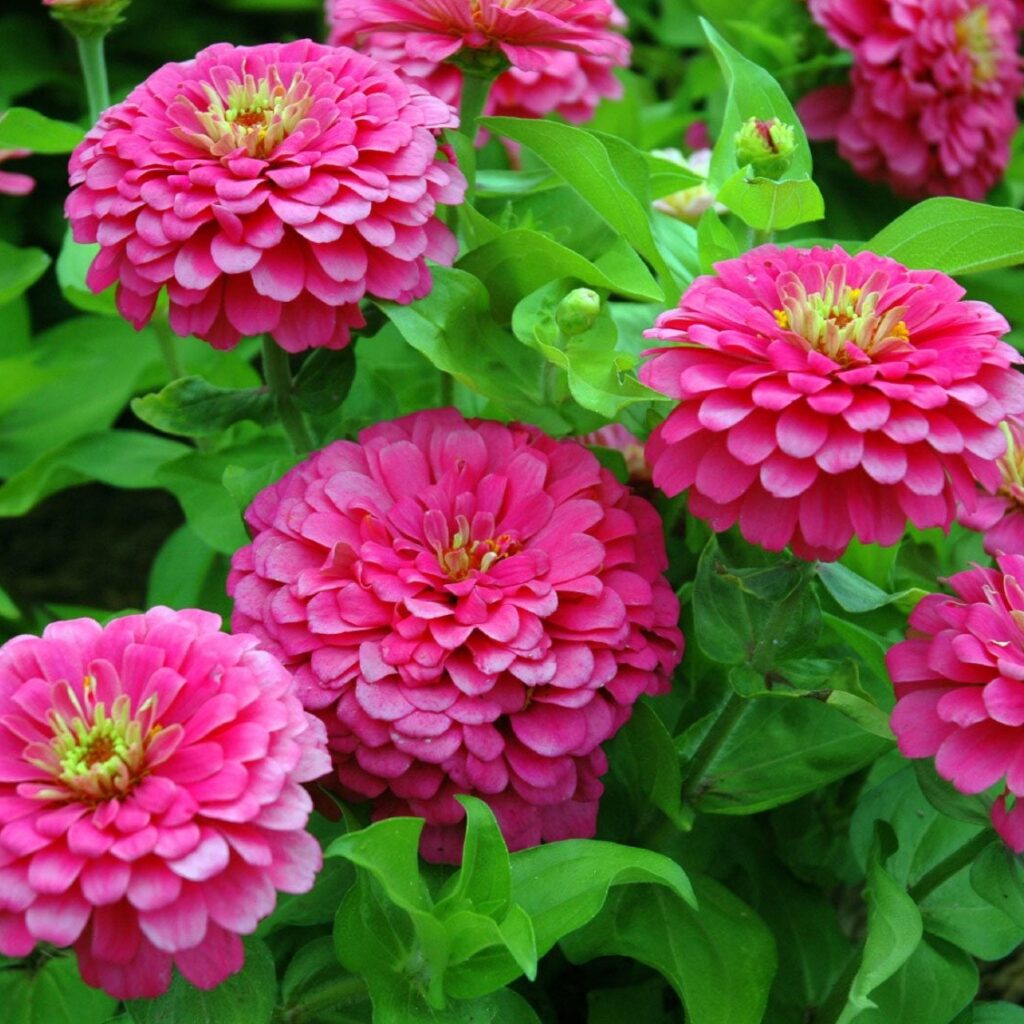
Zinnias are relatively hardy but may face some common pests and diseases.
Common Pests:
- Aphids: Spray with neem oil or insecticidal soap.
- Spider Mites: Increase humidity and use miticide if needed.
- Japanese Beetles: Hand-pick or use traps.
Common Diseases:
- Powdery Mildew: Improve air circulation and water at the base of the plant.
- Leaf Spot: Remove affected leaves and avoid overhead watering.
Tip: Choose disease-resistant varieties like ‘Profusion’ and ‘Zahara’ series to minimize problems.
Best Zinnia Varieties for Vibrant Gardens
There are many varieties of Zinnias, from compact mounds to towering cut-flower types:
| Variety Name | Features | Height |
|---|---|---|
| Zinnia elegans | Classic tall Zinnias with large double blooms | 2–3 ft |
| Profusion Series | Compact, disease-resistant, heavy bloomers | 12–18” |
| Zahara Series | Heat-tolerant, mildew-resistant | 12–20” |
| Thumbelina | Dwarf plants perfect for borders and containers | 6–10” |
| Benary’s Giant | Large, florist-quality blooms, tall stems | 3–4 ft |
Growing Zinnias in Pots and Containers
Don’t have space for an in-ground garden? Zinnias grow beautifully in containers.
Container Tips:
- Choose a pot that’s at least 10–12 inches deep.
- Use well-draining potting soil.
- Water more frequently, as containers dry out faster.
- Place in a sunny location (balconies, patios, windowsills).
Compact varieties like Thumbelina or Profusion are best for pots.
Harvesting Zinnias for Bouquets
Zinnias are fantastic cut flowers and last up to 7–10 days in a vase.
Harvesting Tips:
- Cut stems in the morning, just as blooms open.
- Use clean, sharp scissors and place stems immediately in water.
- Strip lower leaves to avoid rot in the vase.
Bonus tip: Cutting flowers regularly encourages the plant to produce more!
Overwintering and Saving Seeds
Zinnias are annuals, but you can save their seeds for next season:
- Let a few blooms dry completely on the plant.
- Collect seeds from the cone center once petals have fallen.
- Store in a cool, dry place in a paper envelope.
Label and date your seeds for easy replanting next spring.
Conclusion: Bring a Colorful Burst to Your Garden
Growing Zinnias is one of the most delightful gardening experiences you can have. Their bold colors, easy care, and rapid growth make them a favorite among both new and experienced gardeners. Whether you’re filling a border, sprucing up containers, or designing a butterfly haven, Zinnias bring a burst of joyful color that keeps on giving. With the right tips and attention, your garden will be buzzing with color all season long.
